I’ve always been drawn to places at the end of the road, and something about the little soggy city of Prince Rupert has forever intrigued me.
Located at the continental terminus of the Yellowhead Highway 16 in northern B.C., “the City of Rainbows” is reportedly Canada’s wettest town.
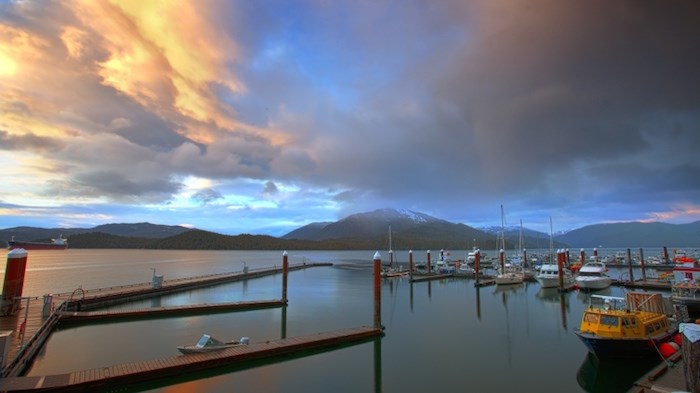 Like many smaller to mid-sized Canadian towns, Prince Rupert — known as “the City of Rainbows,” due to all its rain — hit the skids in the 1990s, but things appear to be on the upswing. Cow Bay Marina in Prince Rupert/Shutterstock
Like many smaller to mid-sized Canadian towns, Prince Rupert — known as “the City of Rainbows,” due to all its rain — hit the skids in the 1990s, but things appear to be on the upswing. Cow Bay Marina in Prince Rupert/Shutterstock
It lived up to its reputation when I recently had a chance to visit both Prince Rupert and nearby Terrace for the first time.
Here’s my first tip if you choose to check out this gorgeous area of the province: it’s much cheaper to fly into Terrace, located two hours inland, than it is to fly into Prince Rupert.
That was OK by me, because it meant that I could check out Terrace and take in the spectacular drive alongside the Skeena River to the coast.
Terrace is located in a huge temperate valley of fertile farmlands and distant snowcapped mountains, in the traditional territory of the Kitselas and Kitsumkalum people. The town is backed by glacial deposits that form flat benches or terraces, which the First Nations refer as Ganeeks Laxha, or “Stairway to Heaven.”
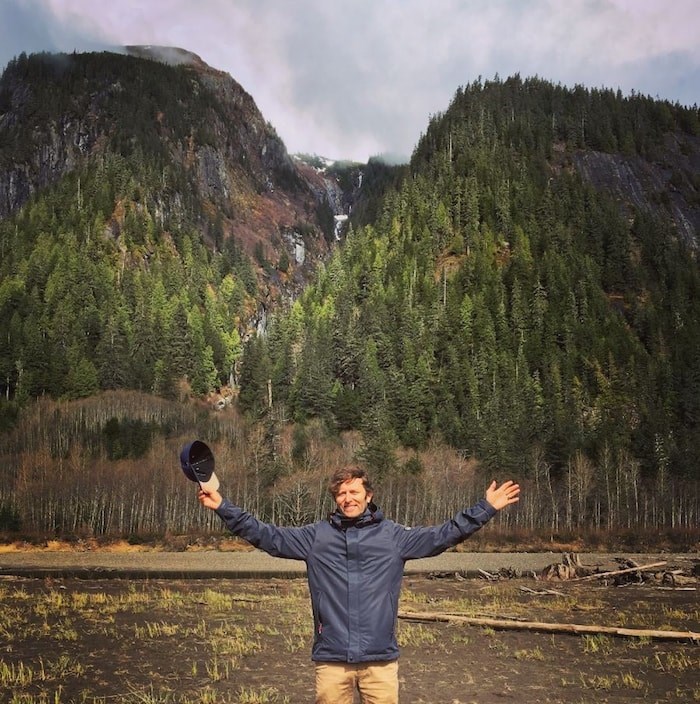 Grant Lawrence enjoys a brief moment of sunshine driving between Terrace and Prince Rupert. Photo courtesy Grant Lawrence.
Grant Lawrence enjoys a brief moment of sunshine driving between Terrace and Prince Rupert. Photo courtesy Grant Lawrence.
Terrace is a busy northern hub with some great places to visit, such as Misty River Books, an excellent independent bookstore that has been in operation for more than 30 years, and Sherwood Mountain Brewhouse, a newly opened microbrew. Before I left for Rupert, I stocked up on books for the kids, and a full flat of beer for me.
The winding road from Terrace to Prince Rupert is lined with epic mountain vistas and foaming waterfalls cascading hundreds of feet into the mighty Skeena River. It’s as spectacular as everyone says it is, but it’s an emotional trip. This otherwise beautiful road is part of the Highway of Tears, where dozens of women have gone missing over a near 50-year period, with little resolution. Notices for missing women are posted at many of the rest stops along the way — a heartbreaking reminder of far too many unsolved disappearances along Highway 16.
As if on cue, when I pulled into quirky Prince Rupert, it began to pour. Like highest-level-windshield-wiper-full-on-sideways-deluge-type rain, which I kind of loved. I crested a hill and looked down upon the little misty town and the calm green waters of Prince Rupert Harbour beyond, the deepest natural harbour in all of North America.
The quaint shops of the Cow Bay neighbourhood were first on my list. After a hearty lunch in the cozy Cowpuccinos Café, I picked up some smoked cod nuggets at Dolly’s Fish Market and walked up the hill to Wheelhouse Brewery, Prince Rupert’s entry into B.C.’s ale trail sweepstakes.
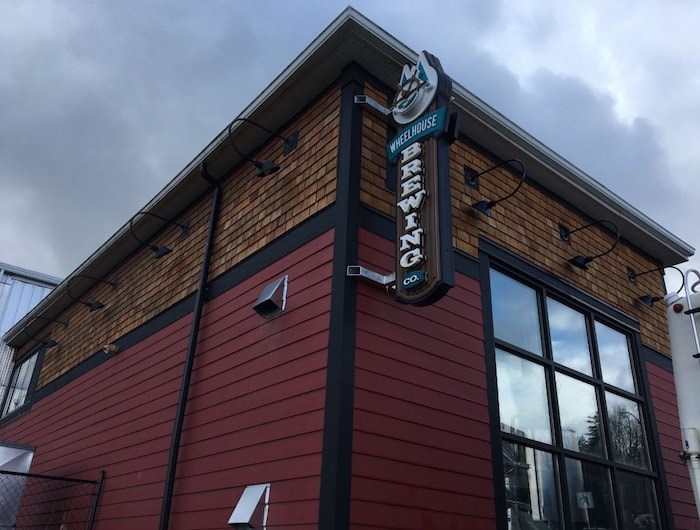 Wheelhouse Brewery is Prince Rupert’s entry into B.C.’s ale trail sweepstakes. Photo by Grant Lawrence
Wheelhouse Brewery is Prince Rupert’s entry into B.C.’s ale trail sweepstakes. Photo by Grant Lawrence
It was International Record Store Day when I was there, but since Prince Rupert doesn’t have a record store anymore, the brewery hosted a record swap. I scored some ridiculously great early ’70s Tex-Mex freedom rock from the bins set up in their rustic tasting room, and when I approached the counter to make my purchase, I was slipped a little baggie filled with salmon jerky by brewery co-owner Craig Outhet. It felt like the ultimate Prince Rupert welcome.
From there, I explored the waterfront, which is mostly blocked off by CN rail yards, save for the recently opened Rushbrook Trail, an easy two-kilometre waterfront hike along the edge of the rainforest, which is perfect for wildlife watching. You can find the trailhead just past the shops in Cow Bay near the marina.
A few blocks away from the brewery, I stumbled upon what could be the coolest, most laid-back street name in all of Canada: Bill Murray Drive. After asking around, I discovered that it was in fact not named after The Life Aquatic star, but instead for a former city councillor.
And even though Prince Rupert has enjoyed one of its sunniest spring seasons on record, you know when you’re in a wet part of the world when you spot Slickers, an entire store dedicated solely to raingear.
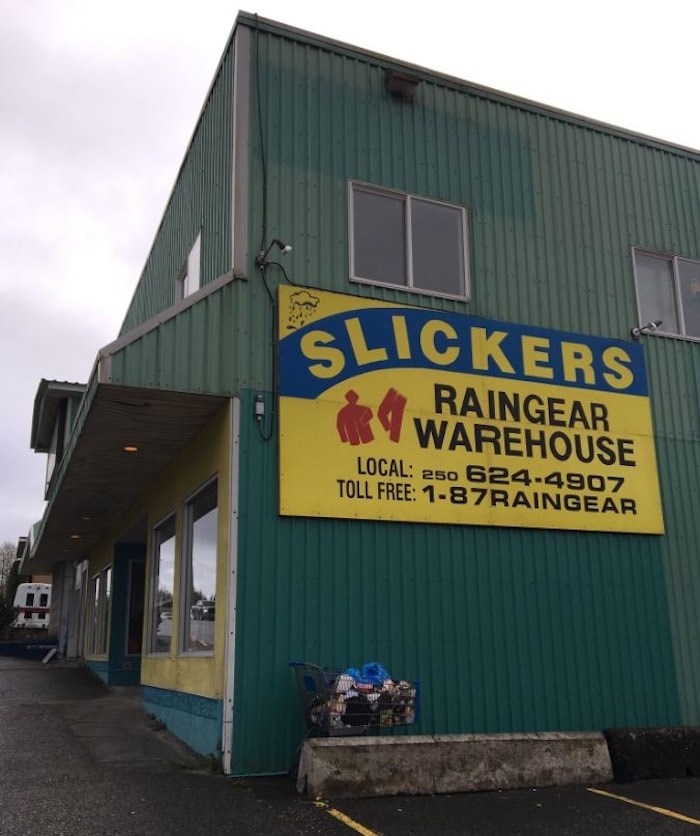 Need a rain coat and gumboots? Slickers has you covered. Photo by Grant Lawrence
Need a rain coat and gumboots? Slickers has you covered. Photo by Grant Lawrence
I also came across a sad relic of the city’s past: the boarded up building formally occupied by the Prince Rupert Daily News, which ceased production almost a decade ago (Prince Rupert’s Northern View still publishes once a week). There are a few too many boarded up downtown storefronts, but you get the solid sense this town is turning things around.
Like many smaller to mid-sized Canadian towns, Prince Rupert hit the skids in the 1990s, and they’ve been pulling themselves out their economic downturn ever since. Fortunes began to sway back into Rupert’s favour around 2005, with the opening of a cruise ship dock, and various other industry upswings.
Up on the ridge overlooking the town and sea, there are grand mansions from the early 1900s, built from old growth timber, that are now attainable for middle class families. At the south end of town, ferries wait to take you to adventurous ports of call in Haida Gwaii, Alaska and Vancouver Island.
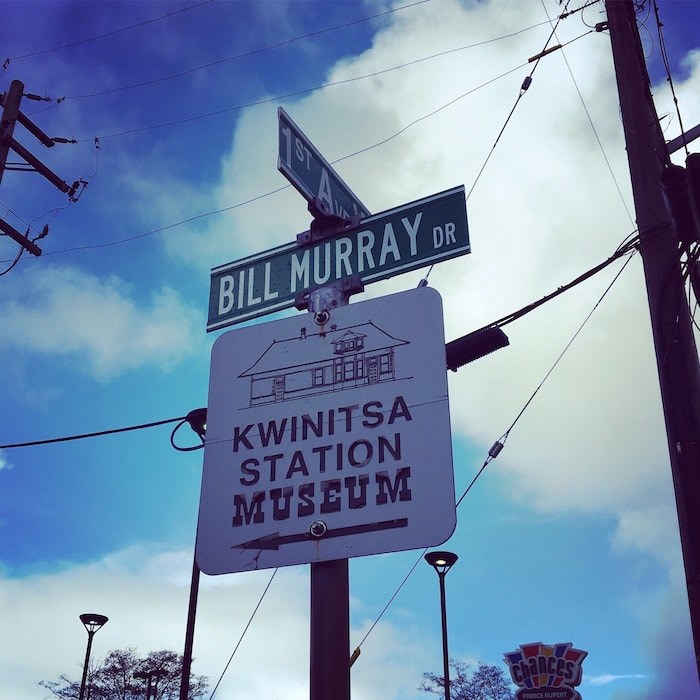 Bill Murray Drive is named after a former city councillor, not the eternally cool and laid back actor. Photo by Grant Lawrence
Bill Murray Drive is named after a former city councillor, not the eternally cool and laid back actor. Photo by Grant Lawrence
When it was time for me to head back to Terrace for my flight home, it was a sunny, breezy and beautiful morning. The air was fresh and clean, and tasted like the ocean. An eagle with a fish in its beak soared overhead. And then, in an instant, it started to pour again. A few moments later, a beautiful rainbow arced out over the harbour.
Everyone I met in Prince Rupert seemed to love where they live, as if they were guarding a well-kept secret — that they have all found a special place in the City of Rainbows.


